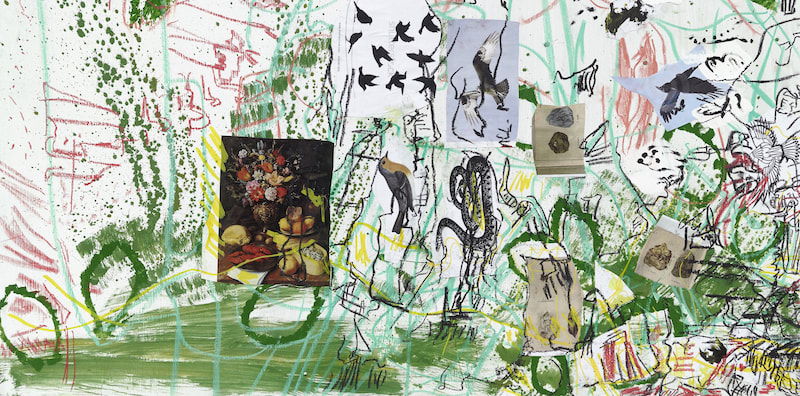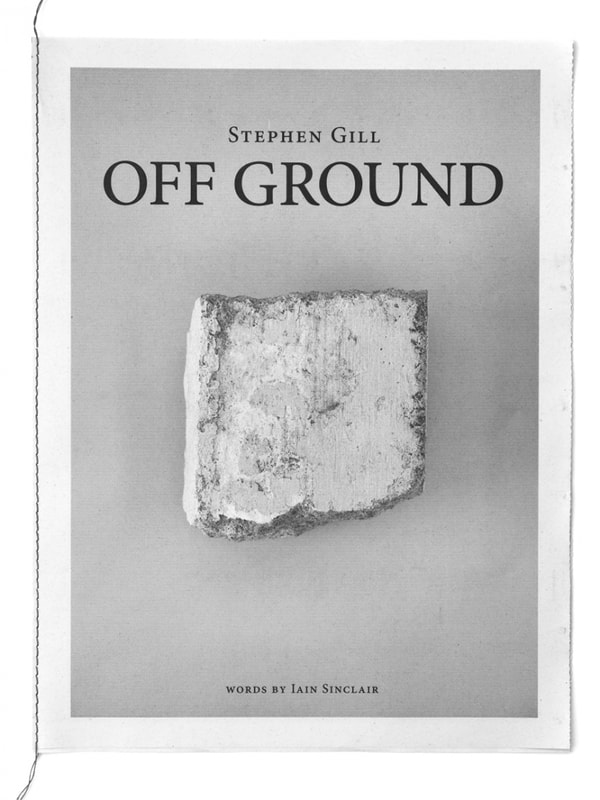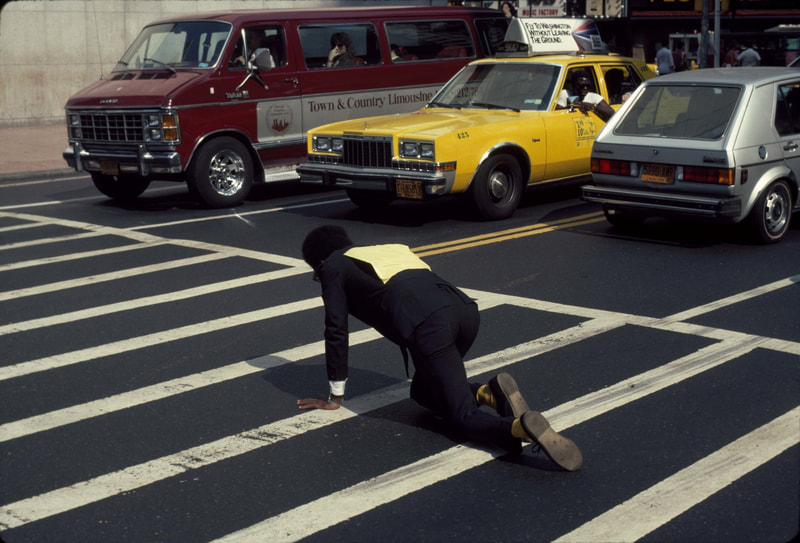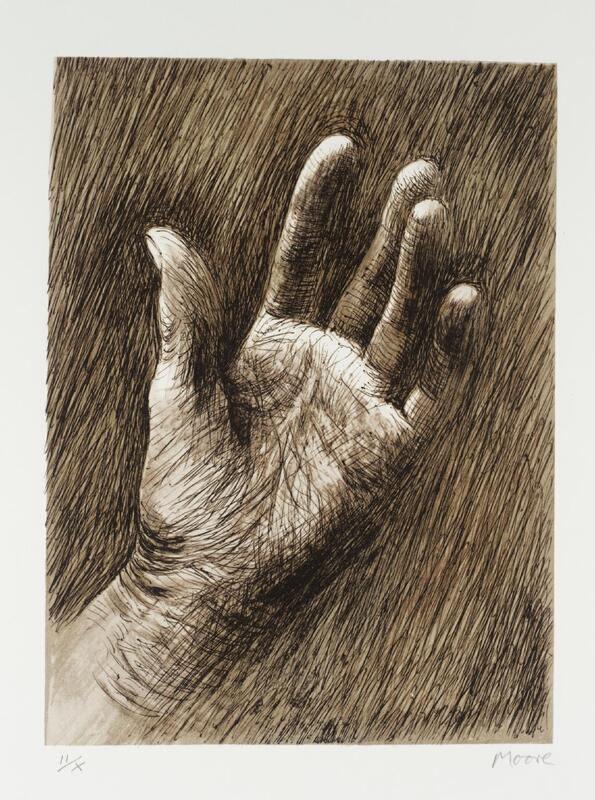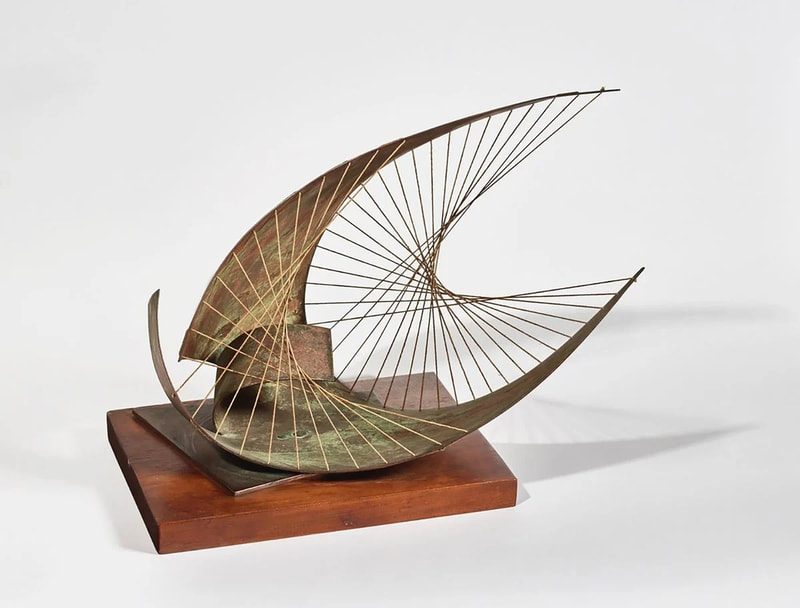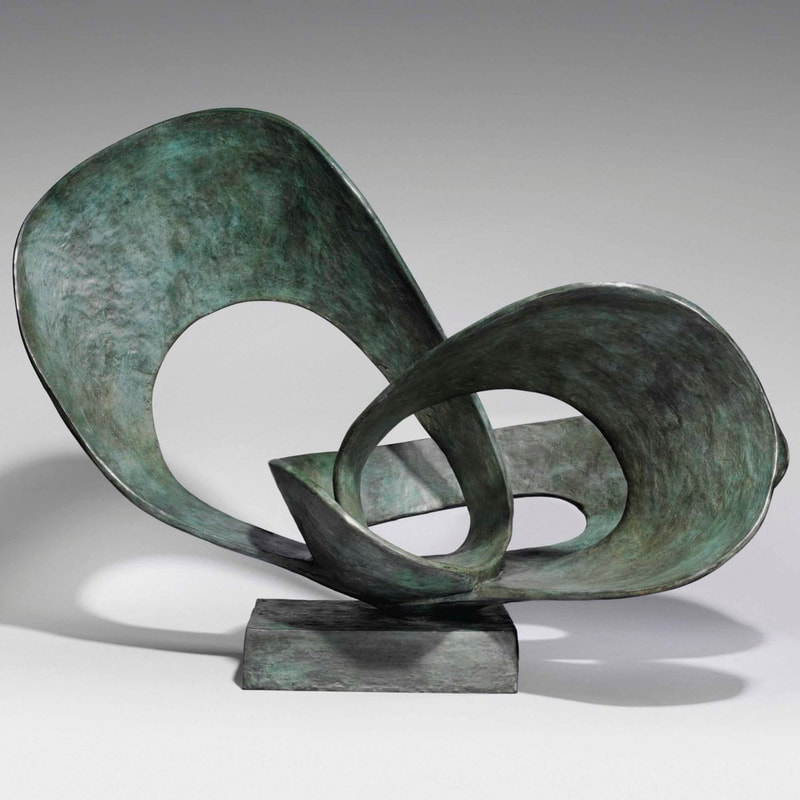TC#6: MATERIAL MATTERS - INTUITION, TOUCH, SENSATION
ABOUTThis resource has been designed for KS3 teachers and students (Term 3) and links closely with Threshold Concept 6: Art engages; head, hands, heart.
KEY THEMES
|
IN PICTURES
The images below have been chosen to encourage initial reflection. Consider them carefully and then use the following questions to help discussions. You might wish to research the titles/artist names - roll over the image to reveal these.
Scroll over the images to reveal the artist's names, also listed here, from top left. Claude Monet; Peter Lanyon; Per Kirkeby; Barbara Hepworth; The Boyle Family; Stephen Gill; Marina Abramovic; Hamish Fulton; Pope. L. Follow the links to find out more.
IN DISCUSSION
- Some of the images above are (pictures of) tangible artworks. Other images are photographs, publications or film stills of creative acts that have now passed. These 'creative acts' are also artworks, but perhaps not in a traditional sense, like paintings or sculptures. How might you organise or arrange these images to highlight connections in style, ideas or approach? What words or categories might help to group these works in various ways?
- Which of these works do you think is the oldest? Which is the most recent? Why do you think this? Why/how do approaches to making art change over time?
- Which of these works look most challenge to make? Which of these works is the most challenging to understand? How/why do you think these various artworks were made?
- In what ways have these artists used their head, hands and heart to varying degrees? How might this have changed throughout art histories?
- Which of these artworks might you be able to - or want to - touch, smell or listen to?
- What senses do we use when we make or look at artworks? How about our various intelligences, emotions, intuitions and physical actions - what words might help to describe these sense-itivities in more depth?
IN words
The following words might prove particularly beneficial to this project:
- Visual elements: texture, colour, form, pattern, line.
- Sensation, sensory, visceral, tactile; 'resistances and affordances', 'push-pull'; intuitive, emotive; exploration, deríve; ephemeral, quotidian; land art, psychogeography; installation, intervention, performance.
In THE ARTROOM
The following slideshow supports the potential sequence of lessons set out below:
Head, Hands, Heart
- Look carefully at The Threshold Concept #6 illustration. The first two slides share related information.
- Create/design your own artwork that incorporates a head, hands, and heart. These might be bright cut-out paper shapes, detailed drawings, collaged photographs, or a combination of all of these. Your response might be 2 0r 3 dimensional, or perhaps even an animation or performance. Importantly, try to make your response as personal as possible. This might be related to your own features, your own interests in art making (for example, in a style or medium you particularly like), or it might address a theme that is important to you. Remember to use your head, hands and heart to do this! Below are a few further thoughts to help.
For the challenge above, one of the decisions you'll have to make - a decision that all artists face - is what style, materials and/or techniques to use. These are all inter-related and one decision effects another. To begin, let's think about the depiction of a hand. Here are various examples, below. Click to enlarge.
From left to right: Henry Moore, The Artist’s Hand, 1973; Elizabeth Catlett, Black Unity, 1968; György Kepes, Hand on Black Ground, 1939–40; Pablo Picasso, Hand Study for Guernica, 1937; Berenice Sydney, Monoprint with Red Hand, 1973
Which groups of words best help to describe these different representations of hands? What words would you add or are uncertain of?
How might these various styles and techniques influence your choices for making your Head, Hands, Heart response - and what part do your heads, hands and hearts play in making these decisions? For example, are you drawn to using a particular material or technique because of how it feels to use or how it best conveys a message?
- Sculpted, carved, powerful, symbolic
- Expressive, contorted, scratched, patterned
- Imprinted, simplified, high contrast, photographic
- Graphic, stylised, abstracted, distorted
- Traditional, accurate, representational, realistic
How might these various styles and techniques influence your choices for making your Head, Hands, Heart response - and what part do your heads, hands and hearts play in making these decisions? For example, are you drawn to using a particular material or technique because of how it feels to use or how it best conveys a message?
A Sense of Place - Impressions and Expressions
In the slideshow, above, study slides 3-6. These will help you with the following activities which are designed to help you reconsider and respond to your environment in new and increasingly sensitive ways.
1. Produce a series of line drawings that either document a walk or an in-depth scrutiny of a space (ideally outside, such as a garden or public park, but you could also complete this exercise in an interior space such as a classroom or your bedroom). Use the following notes to help further.
2. Inspired by the etchings and drawings of Per Kirkeby (see Slide 4 and also examples below), produce a series of drawings/mark makings that focus on details of a walk or space. These might include textures of pavements, patterns on leaves or discarded rubbish. These drawings could be produced and/or presented in a small concertina-style sketchbook.
In the slideshow, above, study slides 3-6. These will help you with the following activities which are designed to help you reconsider and respond to your environment in new and increasingly sensitive ways.
1. Produce a series of line drawings that either document a walk or an in-depth scrutiny of a space (ideally outside, such as a garden or public park, but you could also complete this exercise in an interior space such as a classroom or your bedroom). Use the following notes to help further.
- Inspired by Impressionists such as Claude Monet, repeatedly revisit an area. Repeat quick sketches of the same space. Notice how - and consider why - these works are never exactly the same, even if the conditions or view has not really altered. How does your mood, your concentration, who you are with influence how you look, notice and respond? What happens when you change your viewpoint slightly, or use different materials - for example, a pencil, a fineliner and/or a pastel? How do these different art materials change your experience of looking and mark making?
2. Inspired by the etchings and drawings of Per Kirkeby (see Slide 4 and also examples below), produce a series of drawings/mark makings that focus on details of a walk or space. These might include textures of pavements, patterns on leaves or discarded rubbish. These drawings could be produced and/or presented in a small concertina-style sketchbook.
3. Inspired by the energetic drawings of Peter Lanyon (slide 5), document a walk (or even a bus or car journey) through an urban area. The drawings of artist and writer Timothy Hyman are also a great example to look at, below. Try to work quickly and intuitively to capture not just the movements of others, but also the movement of your own body, head, eyes and hands. Be aware too of what it feels like to draw in a public space. Be brave and active rather than cautious and overly-accurate.
4. Using the large-scale expressive paintings of Peter Lanyon - and perhaps even your own drawings from the task above - produce your own further developed response to your experience of, and sensations within a landscape. Using colour, how might you combine a range of experiences and viewpoints into one artwork? Use your own sketches, photographs, sound recordings, notes, Google Streetview maps etc. to help compose an experimental response. This might be a combination of drawing, painting and collage.
The most exact scientific knowledge of nature, plants, animals, the earth and its history, and the stars, is of no use if we are not equipped for its representation. Paul Klee
Forms and feelings
In the slideshow, above, study slides 7-10. These will help you with the following activities designed to help you to notice and reconsider objects, surfaces and material forms.
1. Barbara Hepworth was a British Sculptor. She was greatly influenced by the world around her and how this made her think and feel. However, her 3 dimensional responses were rarely representational or immediately recognisable. Instead, Hepworth often worked in more abstract ways paying particular attention to the surfaces and material properties of the materials she used. Below are some further examples of her work.
In the slideshow, above, study slides 7-10. These will help you with the following activities designed to help you to notice and reconsider objects, surfaces and material forms.
1. Barbara Hepworth was a British Sculptor. She was greatly influenced by the world around her and how this made her think and feel. However, her 3 dimensional responses were rarely representational or immediately recognisable. Instead, Hepworth often worked in more abstract ways paying particular attention to the surfaces and material properties of the materials she used. Below are some further examples of her work.
From left: 1. Stringed Figure (Curlew) 1956; 2. Six Forms, 1968; 3. Forms in Movement (Pavan) 1956
Produce an experimental sculpture based on your experiences, sensations and encounters within a chosen space and/or the objects within it. You might use your drawings from your previous task to help with this. Your sculpture might be constructed using paper, cardboard, wood string or tape; carved or modelled, using soap, clay or plastacine; or assembled using found materials and objects related to the inspiration/location chosen.
2. Inspired by the Boyle Family (slide 8), develop an artwork or series of responses (photographs, sketches, recordings etc.) that draw attention to either: a place chosen at random - for example, by listing and numbering possible locations and then throwing a dice or drawing out of a hat; OR a selected/given area of limited space (e.g. 1m x 1m) that at first glance doesn't seem particularly exciting (e.g. a corner of the school field or yard) but then forces you to scrutinise, analyse and explore in depth and detail. How, via art - and using your heads, hands and heart - might you find/add value, interest, significance, meaning to this space?
3. Inspired by the work of Stephen Gill (slides 8,9), look for and collect a series of objects or artefacts that tell something of a chosen space or journey. These objects might be recorded via drawings or photographs, or physically gathered and presented. Think carefully about how you might record similar objects, for example, if this is done in a consistent, objective way it can make it easier to compare and notice small differences. How might your collections be presented to others to also encounter? What alternative or unexpected spaces might you exhibit this work, and how might these contrast or fit in with this environment?
MOVEMENT AND (E)MOTION
Look carefully at slides 10-15 in the slideshow above. These artists - Marina Abramovic, Hamish Fulton and Pope.L (and also Richard Long) - have all, at different times and in very different ways, made art related to, or via walking.
How might you embrace walking - physically moving through a particular space at a particular time - as an act of art making? How might you record your movements like 'a line across time and space'? (Apps such as Strava are good for this, and sometimes used for experimental drawing too). Below are some additional insights and starting points to help further with this.
2. Inspired by the Boyle Family (slide 8), develop an artwork or series of responses (photographs, sketches, recordings etc.) that draw attention to either: a place chosen at random - for example, by listing and numbering possible locations and then throwing a dice or drawing out of a hat; OR a selected/given area of limited space (e.g. 1m x 1m) that at first glance doesn't seem particularly exciting (e.g. a corner of the school field or yard) but then forces you to scrutinise, analyse and explore in depth and detail. How, via art - and using your heads, hands and heart - might you find/add value, interest, significance, meaning to this space?
3. Inspired by the work of Stephen Gill (slides 8,9), look for and collect a series of objects or artefacts that tell something of a chosen space or journey. These objects might be recorded via drawings or photographs, or physically gathered and presented. Think carefully about how you might record similar objects, for example, if this is done in a consistent, objective way it can make it easier to compare and notice small differences. How might your collections be presented to others to also encounter? What alternative or unexpected spaces might you exhibit this work, and how might these contrast or fit in with this environment?
MOVEMENT AND (E)MOTION
Look carefully at slides 10-15 in the slideshow above. These artists - Marina Abramovic, Hamish Fulton and Pope.L (and also Richard Long) - have all, at different times and in very different ways, made art related to, or via walking.
How might you embrace walking - physically moving through a particular space at a particular time - as an act of art making? How might you record your movements like 'a line across time and space'? (Apps such as Strava are good for this, and sometimes used for experimental drawing too). Below are some additional insights and starting points to help further with this.
|
|
1. Slow Walking - as a performative and meditative act
Marina Abramovic's 'Shoes for Departure' (slide 10) invite the viewer to have a slowed-down, contemplative experience. The video, right, shows 'A Slow Walk for Longplayer', 2005, by interdisciplinary artist, Ohad Fishof. Longplayer is a one thousand year long musical composition. It began playing at midnight on the 31st of December 1999, and will continue to play without repetition until the last moment of 2999. Both works - the composition and Fishof's 'performance' - challenge our perceptions of movement through time and space. In an age when rapid social media commands, are attention and pressures exist to 'produce' and 'catch-up'. What does it mean to slow walk as a creative act? How might this help you to slow down, to notice, to think and feel? How far/slow might you walk in a given time and space? |
|
2. Walking as a collaborative and performative act.
Walking with others can be an everyday social experience, a shared adventure, or a radical act. Be it military marches, pilgrimages or acts of protest, collective walks have shaped our lives and histories, for good and bad. As a class or small group, how might you devise a collective walk? Could this be an entertaining and absurd act, such as this Monty Python inspired tradition on New Year's Day in Brno, Czech Republic (video, left)? Alternatively, how might you experiment with expectations of movement, for example, by three-legged walking; back-to-back walking; mirroring movements of others or remaining shoulder to shoulder? Alternatively, how might you decide on and prepare for a collective march or protest as a positive force for good? How, collectively, might you combine your heads, hands and hearts? |
|
WHAT THE EYE SEES IS ITS OWN. WHAT THE HEART CAN PERCEIVE IS A VERY DIFFERENT MATTER. GORDON PARKS
FURTHER READING
- Off Ground by Stephen Gill
- Deríve: The Art of Getting Lost
- Hamish Fulton, A decision to use only walking - Studio International
- Marina Abramovic's 'The Lovers' - Guardian article
- Walking and Art - an artist workshop at Tate Modern




